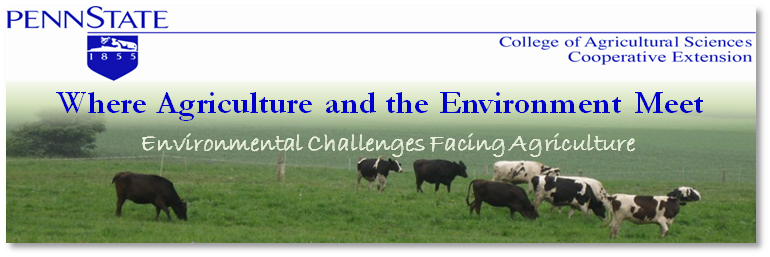 Last week at the Mid-Atlantic Water Program meeting I heard a nice update on the Chesapeake Bay Executive Order. A previous post discussed some of the issues around the 202 reports that were released earlier this fall and the TMDL that is being developed for the bay. The executive order and the TMDL are not necessarily connected, but the goals of each coincide and the process for complying with both will be similar.
From the standpoint of the excutive order the next step is the release of the 203 reports that are due out November 9th. These reports will describe more specifcially what the upcoming process will be and the goals of the executive order. There will be a 60 day comment period on these reports and they will become law in May 2010. The comment period on these reports will be very important because they have been developed with little input from the states, which means that the agencies within the federal government are really driving this process. It is anticipated that these reports will request increased federal funding to reach the goals, which is great, but will also require increased regulation of CAFOs.
The increased CAFO regulation could take on many forms from expanding the definition of a CAFO to include more operations, lower thresholds for current CAFOs, and attention to details that thus far have not necessarily been well inforced. For example, any storm water leaving a facility that houses animals can be considered a "discharge". There may also be more emphasis on practices that are done for no other reason than improving water quality (i.e. buffer strips).
This executive order and TMDL are very bold changes in regards to the Chesapeake Bay and any farmer or ag industry professional needs to be following this process closely because it will impact farming in the watershed.
Last week at the Mid-Atlantic Water Program meeting I heard a nice update on the Chesapeake Bay Executive Order. A previous post discussed some of the issues around the 202 reports that were released earlier this fall and the TMDL that is being developed for the bay. The executive order and the TMDL are not necessarily connected, but the goals of each coincide and the process for complying with both will be similar.
From the standpoint of the excutive order the next step is the release of the 203 reports that are due out November 9th. These reports will describe more specifcially what the upcoming process will be and the goals of the executive order. There will be a 60 day comment period on these reports and they will become law in May 2010. The comment period on these reports will be very important because they have been developed with little input from the states, which means that the agencies within the federal government are really driving this process. It is anticipated that these reports will request increased federal funding to reach the goals, which is great, but will also require increased regulation of CAFOs.
The increased CAFO regulation could take on many forms from expanding the definition of a CAFO to include more operations, lower thresholds for current CAFOs, and attention to details that thus far have not necessarily been well inforced. For example, any storm water leaving a facility that houses animals can be considered a "discharge". There may also be more emphasis on practices that are done for no other reason than improving water quality (i.e. buffer strips).
This executive order and TMDL are very bold changes in regards to the Chesapeake Bay and any farmer or ag industry professional needs to be following this process closely because it will impact farming in the watershed.
Manure Du Jour is a weekly webinar series hosted by the Agriculture and Environment Center at Penn State. Topics include discussions about nutrient management, and reducing the potential for nutrient emissions to air and water. The following is a nice summary of manure application concerns that were addressed during a previous Manure Du Jour webinar.
What environmental challenges are associated with land application of manure?
Land application of manure presents both systemic- and short term challenges. Under the current agriculture structure in Pennsylvania in which large quantities of feed are imported, farmers do not have an adequate amount of land to assimilate the sheer volume of nutrients on the farm and balanced cycling of nutrients cannot be achieved. The net result is an over abundance of nutrients in soils, presenting near term and long term challenges for ongoing farm production and a reservoir of nutrients that can move across- and through the soil via surface- and groundwater to local streams and rivers.
What are the benefits of no-till vs. tilled soils?
No-till practices offer several benefits to soil health over conventional tilling.
• Soil erosion and nutrient loss from erosion is reduced
• Soil quality is improved
• Biological activity in soil is higher
• Soil surface residue is retained
However, no-till practices are at odds with the environmental benefits of incorporating spread manure into the soil. Incorporating manure into the soil:
• Reduces ammonia volatilization
• Reduces runoff of water-soluble phosphorous
• Decreases odors.
How can the best of both no-till and manure incorporation be achieved?
New technologies have been developed that incorporate manure while still retaining the benefits of no-till practices. These technologies deposit manure into the sub-surface with minimal disruption to the soil and include a shallow disc injector, high pressure manure injector, and aerator with banded manure. Use of these practices can reduce ammonia emissions, odor, and loss of water-soluble phosphorous as well as maintain the soil health associated with no-till practices.
Related Resources
View the “Water Quality-Land Application” epi¬sode of Manure Du Jour on the Penn State Agriculture and Environment Web site: aec.cas.psu.edu/news/webinar_archives.asp

